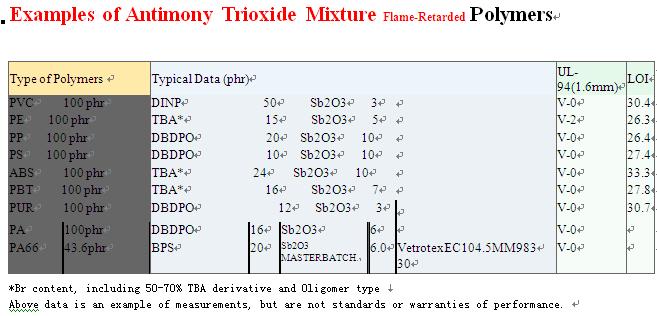Wednesday, January 10, 2007
Falling copper price sounds alarm bells for other metals
The tumbling price of copper, which hit a new low on Friday, is causing concern that the price of other base metals is about to plummet.
The price of copper has fallen 36 per cent since its peak last May of $8,800 per tonne. On Friday, it closed at $5,611, exposing copper miners to lower earnings after a record year.
There are fears that weakening demand from the American housing and carmaking sectors will put further pressure on metals prices.
The long bull run for base metals pushed all the leading contracts to record highs on the London Metal Exchange last year and mining companies benefited as their share prices soared.
Analysts are predicting that further falls are likely, with a number of leading brokerages forecasting that copper will end the year at less than $5,000 a tonne — about the same level that it was at in January 2006. As the copper price has fallen, leading miners have suffered. When copper hit its peak on May 11, BHP Billiton’s share price was £12.12, but it has fallen 26 per cent to 890p. Rio Tinto’s share price has fallen 24 per cent to £25.31 in the same period.
The other major metals, including aluminium, zinc, lead and nickel, have been largely insulated from serious price falls, but this may be about to change. Where copper leads, generally the other metals follow.
Nick Moore, analyst at ABN Amro, said: “Copper was in the vanguard leading prices up at the start of the boom and, as the flagship metal, it is likely to lead the others lower in the future.”
While this is bad news for mining companies, large industrial consumers will be breathing a sigh of relief. They have been battered by high raw material prices that have eaten into margins.
There are a number of factors contributing to copper’s decline. The first is concern about the state of the global economy and in particular weakness in the American housing and car markets, which are large consumers of copper.
China, which accounts for 22 per cent of global demand for copper, is another factor. The fast-growing country is sourcing more copper from within its own borders and has been running down stockpiles.
Another issue to worry investors is the growing surplus of the metal. Miners have rushed to ramp up production to take advantage of the high prices and this is leading to oversupply. Similar problems are likely to beset the other metals, which has led to bearish forecasts from analysts.
Ed Meir, an analyst with Man Financial, believes that copper may be reaching the end of its decline, but not the other metals “which have barely corrected and are still at very high prices”.
Aluminium closed on Friday at $2,610, down 3.3 per cent on Thursday, while nickel fell 3.2 per cent to $33,100 and tin was down 2.5 per cent to $10,600.
消息來源
The price of copper has fallen 36 per cent since its peak last May of $8,800 per tonne. On Friday, it closed at $5,611, exposing copper miners to lower earnings after a record year.
There are fears that weakening demand from the American housing and carmaking sectors will put further pressure on metals prices.
The long bull run for base metals pushed all the leading contracts to record highs on the London Metal Exchange last year and mining companies benefited as their share prices soared.
Analysts are predicting that further falls are likely, with a number of leading brokerages forecasting that copper will end the year at less than $5,000 a tonne — about the same level that it was at in January 2006. As the copper price has fallen, leading miners have suffered. When copper hit its peak on May 11, BHP Billiton’s share price was £12.12, but it has fallen 26 per cent to 890p. Rio Tinto’s share price has fallen 24 per cent to £25.31 in the same period.
The other major metals, including aluminium, zinc, lead and nickel, have been largely insulated from serious price falls, but this may be about to change. Where copper leads, generally the other metals follow.
Nick Moore, analyst at ABN Amro, said: “Copper was in the vanguard leading prices up at the start of the boom and, as the flagship metal, it is likely to lead the others lower in the future.”
While this is bad news for mining companies, large industrial consumers will be breathing a sigh of relief. They have been battered by high raw material prices that have eaten into margins.
There are a number of factors contributing to copper’s decline. The first is concern about the state of the global economy and in particular weakness in the American housing and car markets, which are large consumers of copper.
China, which accounts for 22 per cent of global demand for copper, is another factor. The fast-growing country is sourcing more copper from within its own borders and has been running down stockpiles.
Another issue to worry investors is the growing surplus of the metal. Miners have rushed to ramp up production to take advantage of the high prices and this is leading to oversupply. Similar problems are likely to beset the other metals, which has led to bearish forecasts from analysts.
Ed Meir, an analyst with Man Financial, believes that copper may be reaching the end of its decline, but not the other metals “which have barely corrected and are still at very high prices”.
Aluminium closed on Friday at $2,610, down 3.3 per cent on Thursday, while nickel fell 3.2 per cent to $33,100 and tin was down 2.5 per cent to $10,600.
消息來源
Subscribe to:
Post Comments (Atom)
Examples of Antimony Trioxide Mixture Flame-Retarded Polymers








0 comment:
Post a Comment